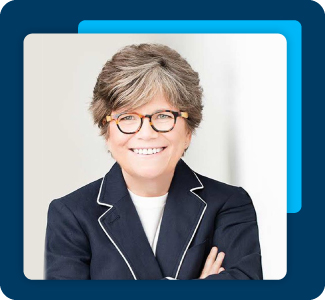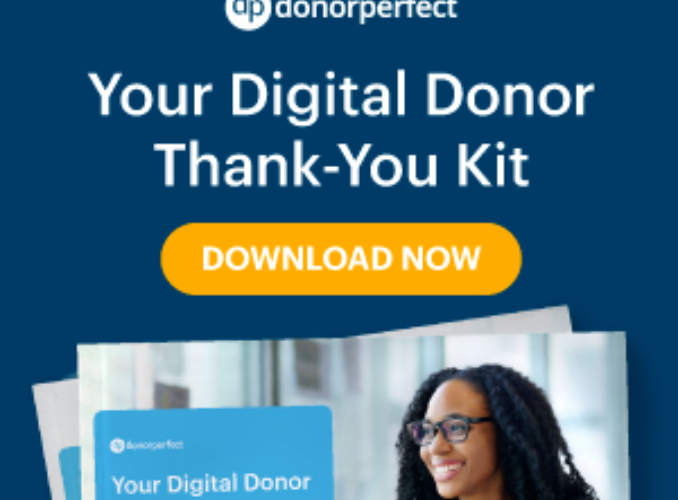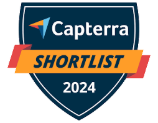In the world of nonprofit leadership, few names resonate quite like Joan Garry. With experience spanning the C-suite, boardrooms, and classrooms, Joan brings humor, clarity, and no-nonsense strategy to an often-overcomplicated subject: how to engage with your nonprofit board to encourage their philanthropic partnership and participation.
In Episode 8 of Nonprofit Expert, the podcast presented by DonorPerfect, Joan unpacks common (and fixable) fundraising challenges faced by nonprofit boards. Drawing on her journey from corporate executive to nonprofit CEO and founder of the Nonprofit Leadership Lab, she offers a roadmap to transform board engagement from passive oversight to active, passionate fundraising.
Here are some key takeaways from Joan’s transformative episode:
Introduction: Fundraising is a team sport
A love of fundraising is probably not why someone starts a nonprofit. But it’s what keeps the mission moving forward. And yet, far too often, nonprofit boards are sidelined from this critical function. For some fundraisers, asking for board participation beyond their giving and attendance at twice-annual meetings may be an overstep.
However, the act of joining a nonprofit board indicates a person’s passion and interest in a particular mission that extends beyond cutting a check. How much can we ask of a board of directors in terms of fundraising? Joan cuts through the confusion with a bold but simple truth: “Fundraising is a team sport.”
“Your board isn’t just a legal requirement. It should be your posse of ambassadors, storytellers, and change agents.” – Joan Garry

When nonprofit boards stop functioning as bystanders and step into their roles as enthusiastic partners, nonprofit fundraisers can propel their missions forward at a much faster rate. This starts with a shift in mindset and structure.
Want more from Joan? Check out her guide to board engagement—available for free download below! Building a Board of Ambassadors: A 6-Step Guide >>
Creating the right conditions: The four levers of board fundraising success
Joan outlines four powerful levers that transform boards into fundraising allies:
- Recruitment
- Diversity
- Ignition
- Reframing the ask
Let’s explore each with actionable tips and see how DonorPerfect can help bring these ideas to life.
1. Recruit strategically, not conveniently
Nonprofit board recruitment often starts from a place of scarcity. A founder needs board members to get their 501(c)(3), so they round up friends and family. The result?
A group of “box-checking buddies” who aren’t prepared—or passionate enough—to fundraise.
“We miss time and again that people who join boards actually want to do meaningful work. They just need to know what their job is.” – Joan Garry
What strategic recruitment looks like
- Define your ideal board composition using a skills and values matrix
- Look for leaders, not just names—people with vision, commitment, and follow-through
- Ask deeper questions: “Why this mission?” instead of “Do you want to help?”
- Listen to the words your donors are using with you. A happy donor might say, “I just want to give back,” while a potential board recruit might say, “This cause matters deeply to me because…”
DonorPerfect tip: Use custom contact tags and note fields to track board candidate interests and networks, aligning them with campaign needs.
2. Build diversity in thought, network, and influence
Effective fundraising isn’t about knowing the wealthiest people—it’s about finding and building networks among people who are passionate about your mission and interested in connecting you with the resources your nonprofit needs to thrive.
“Strong nonprofits have big posses. That means recruiting people with unique spheres of influence.” – Joan Garry
Diversity isn’t just about representation; it’s about expansion. When every nonprofit board member comes from the same circle, your reach shrinks. Bringing in people with different backgrounds, perspectives, and connections creates more opportunities to invite others into your mission.
Pro tip: Evaluate your nonprofit board’s diversity using a sphere map. What audiences aren’t currently represented? Start there.
3. Ignite passion with purposeful engagement
Once you have the right people, how do you keep them fired up? Joan stresses the importance of creating board meetings that inform, enrich, and ignite. She says board meetings should make members leave saying, ‘Wow, I want to do more for this cause.’”
Strategies to ignite board engagement
- Invite guest speakers to share real-world impact stories
- Start meetings with a mission moment or client quote
- Share short videos or program updates before each meeting
- End with a challenge: “What’s one thing you’ll do this month to invite someone closer to the cause?”
DonorPerfect tip: Send out pre-meeting dashboards highlighting recent campaign success, donor stories, or volunteer wins to get board members emotionally engaged—and practically informed. How to Track Donor Data & Nonprofit Analytics Using a Fundraising Dashboard >>
4. Reframe fundraising as an invitation, not a transaction
Many board members freeze when asked to “fundraise.” But Joan reframes it beautifully: “Board members aren’t crowbars for wallets. They’re ambassadors in the invitation business.”
The job isn’t to pressure friends for checks—it’s to invite people to a meaningful party. Some will say yes, some won’t. But the goal is creating opportunities for connection.
Make it easy to say yes:
- Teach your board to tell a two-minute impact story
- Provide social media copy and donor-facing materials
- Celebrate their storytelling and stewardship, not just dollars raised
DonorPerfect tip: Tag donor interactions sparked by board referrals and thank the board member for making the connection.
The development committee: The missing link
If your fundraising staff feels disconnected from your board, it might be because a critical bridge is missing: a well-functioning development committee.
Joan notes that too many organizations either skip this entirely or assign it without clarity. Done right, this committee isn’t about micromanaging the staff—it’s about peer accountability and partnership.
“A development committee isn’t about oversight. It’s about building the tools and culture your board needs to succeed in fundraising.” – Joan Garry
Development committee success tips:
- Staff should partner with the committee chair to co-develop strategies
- Share real impact stories monthly for board members to retell
- Create a donor stewardship roster—each board member connects with 2-3 donors throughout the year
DonorPerfect tip: Generate board-friendly donor lists—like long-time givers, lapsed donors, or volunteers—tailored to each board member’s strengths.
Board fundraising in action: Real-world examples
From Joan’s coaching and Leadership Lab, here are strategies that nonprofit boards have used successfully:
- Storytelling workshops with role-play scenarios – practice makes confidence
- Board-led donor stewardship – especially effective with lapsed donors
- Social media activations – give board members posts and templates to share on LinkedIn, Instagram, and Facebook
- Exit interviews with outgoing board members—ask what made them feel most accomplished—and use that insight to inspire others
A case study in board transformation
One organization Joan worked with had a disengaged, overly fiduciary board. A series of smart internal shifts helped create a board that supported the mission with enthusiasm.
Here’s what they did differently:
- Recruited with clarity—they set specific expectations, spheres of influence, and shared values
- Replaced “Why isn’t the board doing more?” with “How can we fire them up?”
- Made board meetings magnetic—inviting conversations on impact and purpose
- Reframed board work as partnership, not policing
The result? A board that fundraised, shared their pride publicly, and left their tenures feeling accomplished and deeply connected to the mission.
Common pitfalls to avoid
Even great ideas fall flat without thoughtful application.
Here are some potential missteps to plan ahead of:
- Recruiting without expectations – If you didn’t tell them what the job was, don’t be surprised they’re not doing it
- Using board meetings for data dumps – Skip the spreadsheets—bring the stories
- Treating the board as passive advisors – Engage them as partners, not passengers
- Fearing the “ask” too much – You’re inviting, not imposing
Try it yourself: Board fundraising readiness prompts
Use these prompts at your next retreat or committee meeting:
- Recruitment – What skills or lived experience are we missing?
- Diversity – Whose networks are we not yet tapping?
- Ignition – What’s one story we’ve shared lately that got people excited?
- Reframing – How can we equip our board to feel like storytellers, not solicitors?
- Stewardship – Who are three lapsed donors a board member could reconnect with this month?
Board fundraising doesn’t have to be awkward or ineffective. With the right mindset and tools, your board can become your loudest champions, strongest storytellers, and most passionate fundraisers.
“We’re not here to check boxes. We’re here to light fires.” – Joan Garry
And with a system like DonorPerfect behind you, you can give them what they need to succeed—data, reminders, stories, and connection. Get a demo and see how DonorPerfect can help you raise 25% more funds in your first year with us.
Download your free resource
Building a Board of Ambassadors: A 6-Step Guide by Joan Garry







